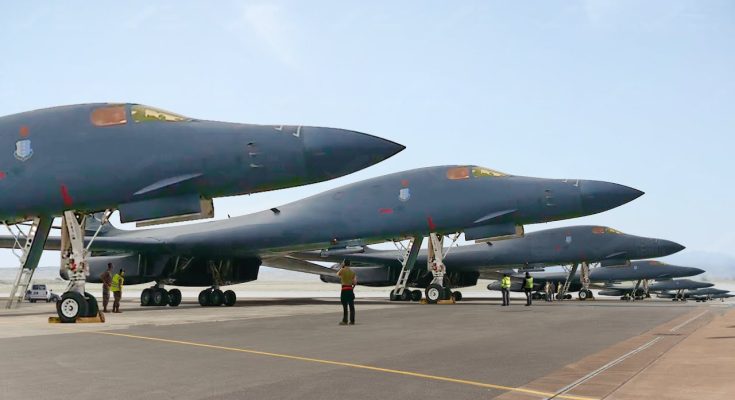Starting the U.S. Gigantic B-1 Lancer Before Takeoff at Full Afterburner
The B-1B Lancer, known as the “Bone” (B-One), is one of the most powerful and intimidating bombers in the U.S. Air Force. Designed for speed, firepower, and long-range strike missions, the B-1B is the only supersonic heavy bomber in the world. Before this massive war machine even takes off, an incredible sequence of events unfolds as ground crews and pilots prepare for full afterburner launch—a breathtaking sight of raw power and precision.
Prepping the B-1B for Takeoff
Before the B-1B Lancer can even taxi to the runway, the flight crew goes through an intense checklist to ensure that every system is ready. This process includes:
✅ Powering up the four General Electric F101-GE-102 turbofan engines
✅ Conducting flight control and weapons system checks
✅ Fuel and payload verification
✅ Final clearance from air traffic control and mission command
As the engines roar to life, the B-1B’s variable-sweep wings, which can adjust for different flight conditions, are set for takeoff.
Igniting the Afterburners: A Thunderous Display
Once the B-1B reaches the runway, the pilots prepare for one of the most dramatic takeoffs in military aviation. The four massive turbofan engines are pushed to full throttle, and then, the afterburners are ignited—blasting massive flames and shockwaves from the jet nozzles.
🔥 Each afterburner produces an extra 30% thrust, pushing the jet past Mach 1.25
🔥 The entire airframe shakes as it surges forward with nearly 60,000 lbs of thrust
🔥 A deafening roar erupts as the aircraft streaks down the runway
As the B-1B accelerates, its wings begin to sweep backward, reducing drag and allowing it to slice through the sky at incredible speeds.
The Bone Takes Flight
At just over 3,500 feet, the B-1B lifts off, retracting its landing gear and soaring into the sky. This moment is pure adrenaline—watching an over 477,000-pound bomber blast off like a fighter jet. Unlike the stealthy B-2 Spirit, the B-1B relies on speed, low-altitude penetration, and overwhelming firepower.
🚀 Top Speed: Mach 1.25 (~950 mph)
🚀 Range: 7,500 miles (with in-flight refueling)
🚀 Payload: A staggering 75,000 lbs of bombs, missiles, and precision-guided weapons
The B-1B is built for deep strike missions, capable of flying at low altitudes to avoid enemy radar and hitting targets with extreme precision.
A Supersonic Beast Ready for Battle
Once airborne, the B-1B can climb to high altitude or skim just above the terrain, staying undetected as it carries out nuclear or conventional bombing missions. From past combat operations in Iraq and Afghanistan to potential future conflicts, this bomber remains a key weapon in America’s strategic arsenal.
When the B-1B Lancer takes off at full afterburner, it’s a thunderous symbol of U.S. air superiority, proving that speed and firepower remain unmatched in modern warfare.



